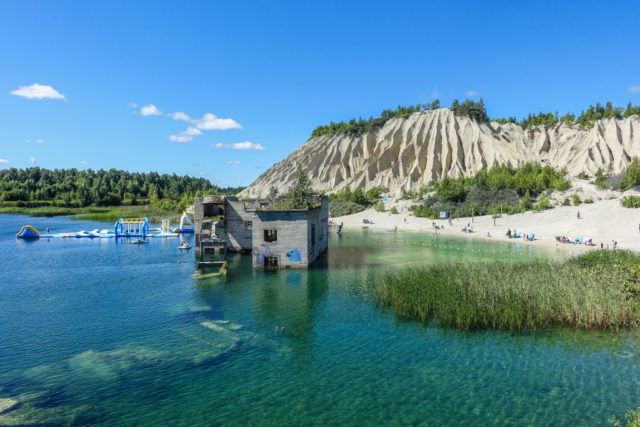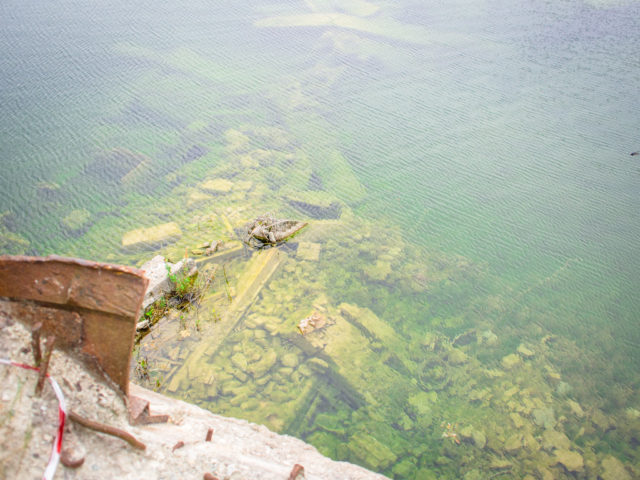The scenic landscape of the Rummu quarry in northern Estonia is a stark contrast to the dark history that occurred at the nearby former prison. A relic of the limestone industry, the beautiful clear waters of the Rummu Lake now contain the sunken ruins of the prison.
Rummu was more like a labor camp than a prison
Built in 1937-1938, the original prison structure and barracks were built of wood. The quarry was opened the same year (1938) that the mining of Vasalemma limestone, a type of marble, began. The stone quarried from the area was entirely mined by the inmates of Rummu prison.


In 1949, the first cell building and sauna-laundry house were completed on the prison grounds. The main structures of the prison colony were built between the 1960s and 1980s. By the 1970s, the limestone deposits in the quarry were already depleted and inmates were redirected to metal and wood industries. Many of the original prison buildings are abandoned on land not far from the shore of Rummu Lake, but the various buildings used for the quarry have been lost to the water.


Inmates were frequently forced to work in three shifts in factories manufacturing military goods, gravel, and other products. Following the collapse of the USSR in the 1990s, the prison was abandoned. Soon, groundwater that was originally pumped into a nearby town to use for farming began to flood the quarry and the old prison buildings.
The fate of Rummu prison
The prison moved from its original location in 1994 and merged with Murru prison. In 2011, it merged a second time with Harku prison – changing its official title to “Harku and Murru prison” which was officially closed in 2013. In 2015, architecture students from the Estonian Academy of Arts began drafting proposals of what the abandoned quarry could become. As of 2017, the owners of the quarry were planning to turn it into a technology park.

Navigating a dive like Rummu prison isn’t easy. Between the frigid temperatures, very shallow depth, visibility, and the potential for the ruins to collapse at any given moment, only experienced divers should ever attempt to see the underwater ruins up close. Abandoned Nordic, a diving team of two Finnish urban explorers, were able to explore the underwater ruins of the prison. While diving through the various sunken buildings, they were reminded of the site’s haunting history.
Underwater: The Rummu Prison was built on a Northern Estonian beach & was abandoned when the Soviet Union collapsed. pic.twitter.com/NcbVa2TqJh
— Culture Trip (@CultureTrip) May 25, 2016
“Bars in the windows reminded us about the history of the place. Like many other abandoned buildings in Estonia, this one was made out of cheap gray bricks which were laying around everywhere on the bottom. Inside this weird underwater building, we watched our exhale bubbles hit the ceiling and enjoyed a break from the sensation of ordinary gravity.”

More from us: Nicosia International Airport: Abandoned in the Crossfire of the Cyprus Conflict
While diving to see the ruins is dangerous and forbidden, some still dare to see the sunken prison for themselves. The main building is only partially submerged, but other buildings are now completely underwater. The sunken structures are covered in moss with a floor of thick seaweed. Divers can still see the original fixtures of the prison including barred windows and walls with lamps still intact.
